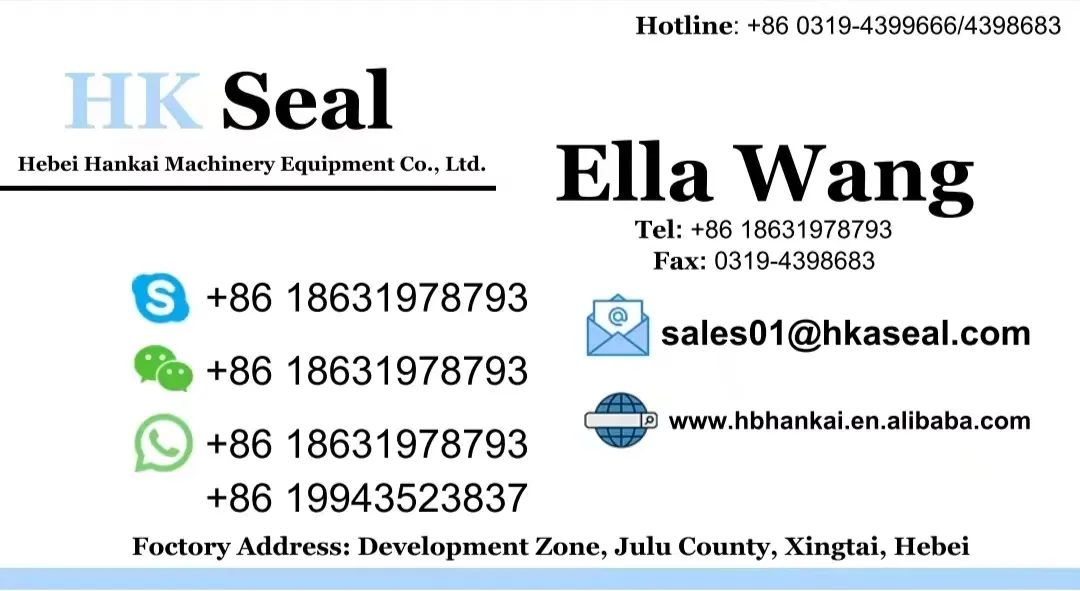Oct . 12, 2024 00:13 Back to list
Piston Seal Kit for Enhanced Performance and Durability in Machinery Applications
Understanding Piston Seal Kits Key Component for Hydraulic Systems
Piston seal kits are critical components in various hydraulic systems, ranging from industrial machinery to automotive applications. They play a pivotal role in ensuring the efficient operation of hydraulic cylinders, preventing fluid leaks, and maintaining system pressure. This article explores the importance of piston seal kits, their components, and tips for proper maintenance.
What is a Piston Seal Kit?
A piston seal kit typically consists of multiple seals designed to fit around the piston of a hydraulic cylinder. These seals are engineered to prevent hydraulic fluid from leaking out of the cylinder while allowing the piston to move freely. A well-functioning piston seal kit ensures that the hydraulic system operates effectively, improving performance and prolonging the lifespan of the machinery.
Components of a Piston Seal Kit
Piston seal kits generally include the following components
1. Piston Seals The primary seals that prevent fluid from escaping as the piston moves within the cylinder. They are usually made from materials such as nitrile, polyurethane, or fluorocarbon, each chosen for its durability and resistance to wear.
2. Backup Rings These are often used in conjunction with piston seals. Backup rings provide added support to the main seals, preventing them from extruding under high pressure and ensuring a more reliable seal.
3. Wear Rings These rings protect the piston and cylinder walls from wear and tear caused by friction. They help maintain the piston’s alignment and reduce the chances of damage, thereby enhancing the overall efficiency of the hydraulic system.
4. O-rings O-rings are versatile seals utilized in various applications within a hydraulic system. They can be used to seal connections, cover flanged joints, or serve as additional support for piston seals.
Understanding the function of each component is vital for selecting the right piston seal kit for a specific hydraulic application
.piston seal kit

Importance of Quality in Piston Seal Kits
The performance of a hydraulic system relies heavily on the quality of the piston seal kit used. Low-quality seals can lead to faster wear, fluid leakage, and ultimately, system failures. Therefore, it is crucial to source piston seal kits from reputable manufacturers. High-quality materials ensure enhanced resistance to temperature fluctuations, pressure extremes, and chemical compatibility with the hydraulic fluid being used.
One should also consider the working conditions when selecting a seal kit. Factors such as the operating pressure, temperature range, and the type of fluid can significantly influence the choice of materials and designs.
Maintenance Tips
To maximize the lifespan of piston seal kits and maintain hydraulic system efficiency, proper maintenance is essential
1. Regular Inspections Routine checks for signs of wear, leakage, or damage can help identify issues before they lead to major failures.
2. Cleanliness Keeping the hydraulic system clean is paramount. Contaminants can cause abrasion on seals, leading to premature wear. Always ensure that the hydraulic fluid is filtered and free from particulates.
3. Proper Installation Follow manufacturer guidelines when installing a piston seal kit. Improper installation can cause early failure of seals and other components.
4. Monitor Performance Keep an eye on the system’s performance. Any sudden changes in pressure or fluid movement may indicate a problem with the seals.
Conclusion
Piston seal kits are integral to the efficient functioning of hydraulic systems. By understanding their components, ensuring high-quality materials, and practicing proper maintenance, operators can significantly extend the lifespan of their equipment while optimizing performance. Ultimately, investing in the right piston seal kit can save time, resources, and prevent costly breakdowns in hydraulic applications.
-
TCN Oil Seal Metal Ring Reinforcement for Heavy Machinery
NewsJul.25,2025
-
Rotary Lip Seal Spring-Loaded Design for High-Speed Applications
NewsJul.25,2025
-
Hydraulic Cylinder Seals Polyurethane Material for High-Impact Jobs
NewsJul.25,2025
-
High Pressure Oil Seal Polyurethane Coating Wear Resistance
NewsJul.25,2025
-
Dust Proof Seal Double Lip Design for Construction Equipment
NewsJul.25,2025
-
Hub Seal Polyurethane Wear Resistance in Agricultural Vehicles
NewsJul.25,2025
-
The Trans-formative Journey of Wheel Hub Oil Seals
NewsJun.06,2025
Products categories
















